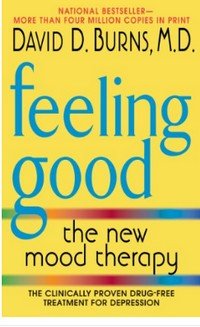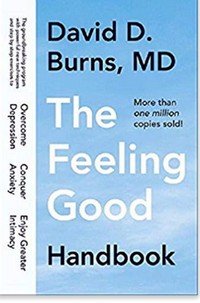
Let’s all become Mr. Spock and get rid of emotions! . . . Not!!! Not ??? |
Many students of REBT have a very difficult time understanding that REBT is not about “getting rid of emotions.” Many critics of REBT use that as a straw man argument. It is simply not so. One of the false accusations uninformed people make is that we are trying to turn people into versions of “Star Trek’s” Mr. Spock; all logic and no emotion. Balderdash! On the contrary, REBT is about learning to distinguish healthy from unhealthy emoting, and then learning to reduce unhealthy to healthy; such as unhealthy depression to healthy sadness, unhealthy anxiety to healthy
concern, unhealthy rage, anger, resentment, bitterness to healthy annoyance or irritation. But it is not about getting rid of emoting, or having (total) control over emoting. That is absurd. It is about learning that we can experience unpleasant emotions and frustrations fully and completely without dying or going crazy or getting stuck in them or acting them out. Paradoxically, this is the surest and most effective way of processing and getting through unpleasant emotions as quickly, smoothly and painlessly as possible. This fits in very nicely with mindfulness practice as well as all the modern behavioral treatments for anxiety. That is, feel the anxiety to process it, rather than trying to control it, turn it off, shut it down or replace it with a more desirable emotion. That is where REBT-CBT sharply departs from old fashioned “positive thinking” and various traditional and modern systems which utilize affirmations and denials. It also differs from traditional relaxation training such as the Relaxation Response (Herbert Benson) and similar approaches which seek to replace the experience of tension with the experience of relaxation. Nothing wrong with those approaches; they can be very useful. However, it is important to understand that is not the goal of REBT-CBT or mindfulness in dealing with unpleasant emotions. Even though the initial phase of REBT is combative, as I often say; acceptance is the soft underbelly of REBT.
Still, even after being tutored in this way, students will say “Yeah, yeah, yeah, yeah . . . But how do I stop feeling anxious?”
One student, for example who practices “shame attacking exercises” suggests that you keeping doing them until you prove to yourself that what people think of you doesn’t matter.
But I say . . .
Of course it “matters” . . . unless you are a sociopath! And the more you have a stake in any particular encounter, the more it matters. No one likes rejection, and it is human to feel a sting and some disappointment when it happens. That’s part of the tapestry of life. Accept it! Embrace it if you can!
 |
 |
 |
 |
 |
 |
The lesson of shame attacking exercises, in my humble opinion, is not to get rid of emotions . . . but to learn that you can experience some anxiety, frustration, disappointment and not die from it, or even be derailed by it. Furthermore, in my opinion, the purpose of shame attacking exercises is not so that you will learn to pick up girls (or whatever it is you are trying to pick up), but to learn that you don’t die from anxiety, disappointment and rejection. Picking up girls is almost secondary. Dr. Ellis never had great success in picking up girls initially, but his famous shame attacking experiments–forcing himself to approach and meet many women–that he practiced in his adolescence at the Bronx Botanical Gardens were highly successful. Those experiences proved the value of being able to EXPERIENCE rather than AVOID anxiety. Interestingly enough, all of the modern behavioral approaches to treating anxiety are based on teaching people to experience and tolerate anxiety, rather than try to control, stop or fix it.
 |
 |
Fondly,
Rex
Rex@REBTinfo.com

![]()
Originally posted 2013-03-26 22:07:14.
- Harrison Bergeron, a story by Kurt Vonnegut, Jr. - Fri 5 Dec 25
- What causes disturbed feelings? - Thu 4 Dec 25



